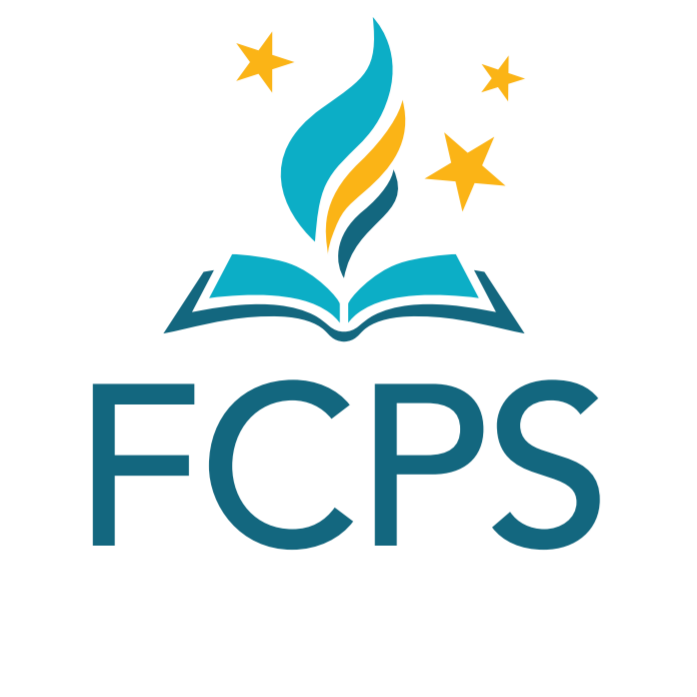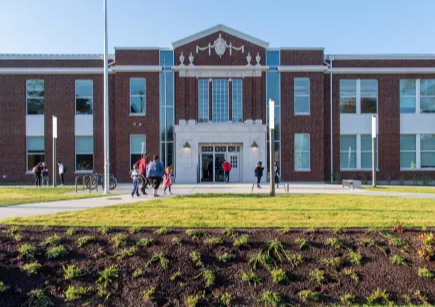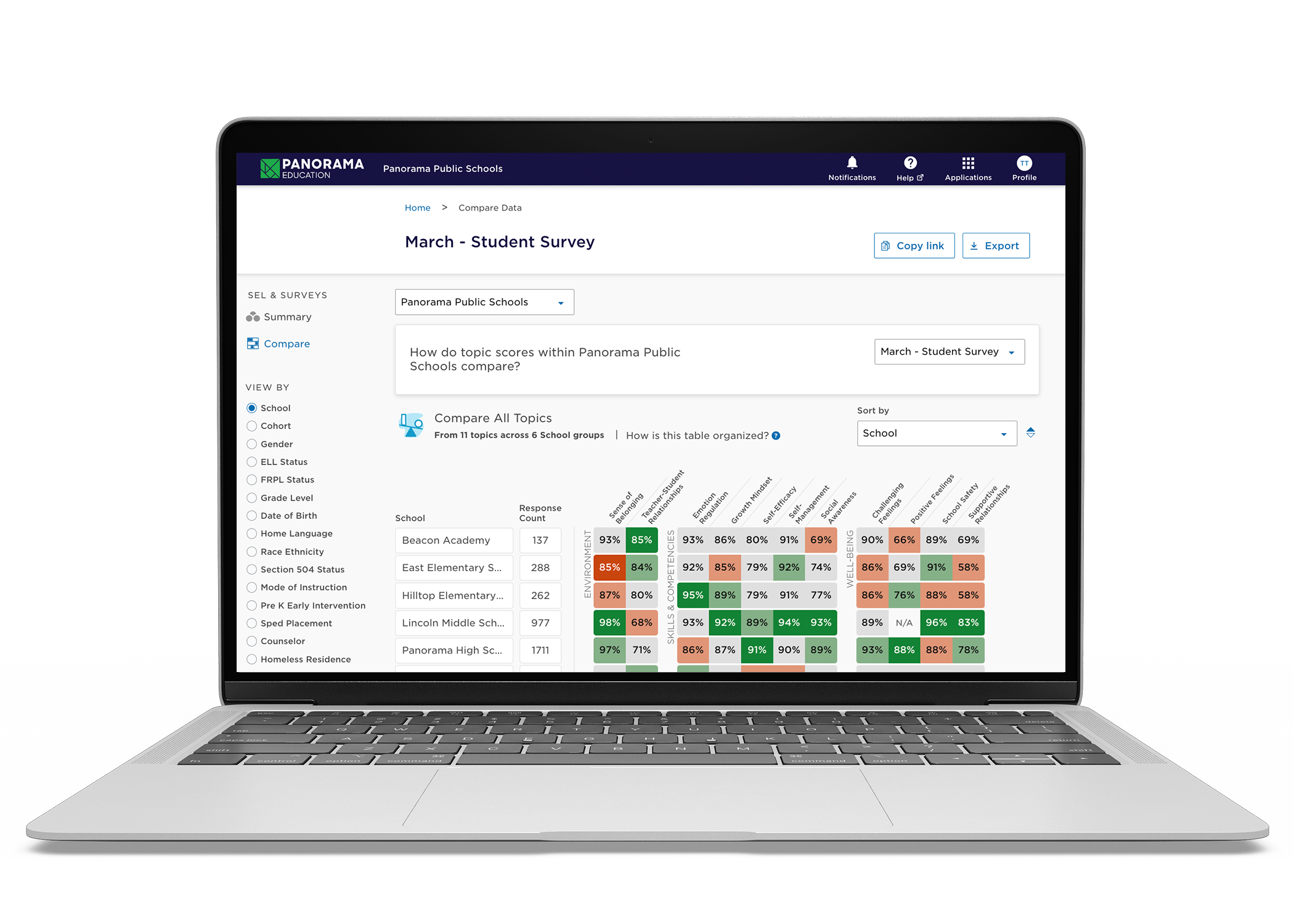Fairfax County Public Schools (FCPS), located in Northern Virginia, is one of the largest and most diverse districts in the nation, serving more than 180,000 students across nearly 200 schools and programs. The district began its partnership with Panorama using student surveys, and over the last four years, expanded it into a system-wide lever to elevate student voice and strengthen school climate. Learn how FCPS deepened its MTSS implementation for behavior and wellness, prioritized student belonging, and turned survey insights into a driver of continuous improvement.
Challenges
- Existing surveys produced data that was anonymous or delayed, making it hard for educators to take timely and targeted action.
- Schools lacked a consistent way to use student voice data across MTSS tiers.
- Educators needed help connecting survey data to broader district goals like attendance, sense of belonging, and enhancing durable skills such as self-management and emotion regulation.
Solutions
Results
- More than 108,000 students completed the most recent Panorama survey, with 130+ schools reaching response rates above 90%.
- With intentional planning, many schools have seen significant positive shifts in their data from Fall 2024 to Spring 2025. For example:
- One middle school saw a 3-point increase in belonging and a 3-point drop in chronic absenteeism in just one year.
- One elementary school saw a 6-point improvement in emotion regulation from the fall to the spring.
- Every school now has a designated Survey Lead to ensure consistent, actionable use of Panorama data in school improvement planning.
Challenges
Before partnering with Panorama, FCPS educators were collecting student feedback regularly, but the data was either anonymous or delayed—making it difficult to take timely, individualized action.
“Our students took a lot of surveys, but a lot of them were anonymous, so we didn't have the ability to dig deeper and look at individual student results," said Jaynie Van Sant, Social Emotional Learning Systems Specialist at FCPS. "Or if they weren't anonymous, we didn't get results for several months. So our staff didn't feel like they could take action on the data because it was so delayed.”
Even when data was available, it often lacked specificity. “FCPS was really trying to find a survey that would provide more information about student skills—from their perspectives…. and data that could be used across all tiers," said Van Sant.
At the same time, schools were working toward goals around attendance, relationships, and school climate—but didn’t have a shared system to connect these efforts. Without access to actionable, building-level feedback, teams were left relying on isolated strategies rather than coordinated plans.
Solution
When FCPS set out to elevate student voice across the district, they needed more than a survey—they needed a partner. The district chose Panorama for its timely student-level data, its usefulness across MTSS tiers, and its flexibility to focus on topics aligned to local needs.
As Kristin Turner, Educational Specialist at FCPS, shared, “My personal and favorite thing about the Panorama survey is that it serves as our largest and most consistent source of student voice.”
FCPS launched Panorama Student Surveys district-wide in 2021, beginning with a strong emphasis on Tier 1 implementation. The goal was to help schools build a solid foundation before expanding to more targeted interventions. From the start, the focus wasn’t just on collecting data—it was on using it to drive building-wide action.
Each school appointed a Survey Lead to serve as the point person for implementation and planning. Survey Leads receive professional development three times a year, with sessions shaped by their own input. Panorama co-develops and co-delivers these sessions.
“That is our connection into the building,” said Turner. “We empower the Survey Leads to be an expert in their schools on taking action on the data.”
To further support building-wide action, Panorama co-created a series of resources with FCPS designed to help schools reflect on their data and take meaningful action. For example, when examining their belonging data, schools identified shared steps—both from students and staff—that could strengthen the sense of belonging and connection across the school community.
Results
More than 108,000 students participated in FCPS’s most recent Panorama survey, with over 130 schools surpassing 90% response rates. “Results like these don't happen by chance. They reflect a clear and intentional vision,” said Amalio Nieves, Professional Learning Director at Panorama.
At one of FCPS’s Title I middle schools, staff tied their school improvement plan to chronic absenteeism—but started with a focus on student belonging. Using survey data, they identified students who needed support, introduced relationship-building strategies, and even protected time in the master schedule for advisory. Within the same year, the middle school saw a 3-point increase in belonging and a 3-point drop in chronic absenteeism.
Alignment between Panorama survey insights and school improvement planning is becoming more common across the district. Many FCPS schools are using student voice data to inform climate and culture goals—especially around attendance and belonging. In addition to required academic goals, schools have the option to set additional goals based on survey data, allowing them to tailor strategies and measure progress in meaningful ways.
At one of the district’s elementary schools, survey results flagged emotion regulation as an area of concern based on Panorama data. The school selected a new curriculum, coordinated instruction across classrooms, and tracked student growth. By spring, students at the elementary school reported a 6-point improvement in emotion regulation.
Schools are also using Panorama data to guide day-to-day planning. “We’ve seen some significant impact,” said Van Sant. “They’re using the data to advocate for protected time and focus on school climate.”
Turner added, “We hear people talking about the data so much more. It doesn’t matter if I’m with administrators, coaches, or counselors. There’s just clearly such an elevated understanding of the data, and how to utilize it.”
And the shift isn’t just in practice—it’s cultural. This kind of growth reflects not just stronger systems, but deeper trust in using student voice to guide everyday decisions.
“Two years ago, I had to start trainings by helping people log in,” Turner said. “Now that never happens.”
Looking Ahead: Next Steps
FCPS is continuing to expand Panorama’s role in strategic planning and collaboration. Central office teams have begun using belonging data as a shared outcome measure.
Survey Leads remain essential to FCPS’s implementation strategy, helping drive consistent practice across schools. A co-created resource for belonging data is also gaining traction as a tool for turning feedback into shared ownership and action.
When it comes to Panorama, FCPS educators are excited for next year, and district teams are building on what works. As more schools integrate survey data into their schoolwide goals, FCPS is staying focused on what matters most: making student voice a meaningful part of everyday practice.
Watch a tour of Panorama Surveys and Engagement, our leading K-12 survey platform.




.jpg)


